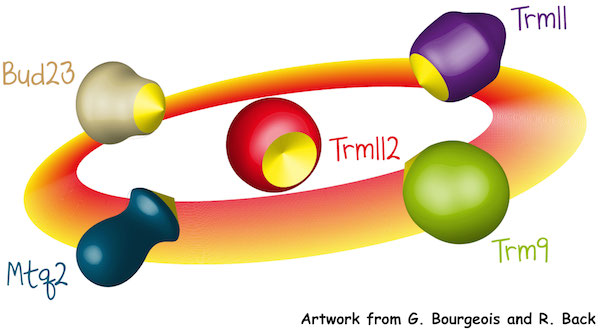Coupling between translation and mRNA degradation in eukaryotes
The synthesis of proteins from mRNAs by the ribosome is a finely tuned process allowing cells to adapt throughout the cell cycle or in response to environmental cues. Similarly to transcription and translation, eukaryotic mRNA decay now also appears as a highly regulated process allowing cells to rapidly modulate protein production. This relies on a tight connection between the translational apparatus and the mRNA decay machinery. The goal of the research performed in Marc Graille’s group is to improve our current understanding of the mechanism and dynamics of eukaryotic translation and mRNA decay using various experimental approaches: yeast genetics, biochemistry, biophysics, structural biology, …
![]()
The thematics developed in the group are:
Post-transcriptional and post-translational modifications of factors (RNA or proteins) involved in translation.
Translation is a multi-step process leading to protein synthesis from messenger RNA (mRNA) templates. It is carried out by the ribosome, a macromolecular complex made of proteins and ribosomal RNAs (rRNA), together with the help of transfer RNAs (tRNA) and translation factors. These translation components are subjected to post-transcriptional/ and post-translational modifications (PTM), which influence the efficiency and accuracy of ribosome biogenesis and/or translation with established consequences on cell cycle progression. More details…

RNA decay pathways.
Regulation of mRNA decay rates is an important control point in determining the abundance of cellular transcripts and hence of proteins to be synthesized.
Mature translatable eukaryotic mRNAs are protected from fast and uncontrolled degradation in the cytoplasm by two cis-acting stability determinants: a methylguanosine cap and a poly(A) tail at the 5’ and 3’ extremities, respectively. As a consequence, mRNA degradation necessitates a subsequent remodeling of the mRNP structure that is triggered by specific signals and leads to the recruitment of activators of decay and enzymes. Eukaryotic mRNA degradation typically initiates with deadenylation followed by the removal of the cap structure protecting the 5’ end of mRNAs. Once mRNAs are uncapped at their 5’ end, they are rapidly degraded in the 5’—> 3’ direction by the cytoplasmic exonuclease Xrn1.
The coupling between translation and mRNA decay processes contributes to some of eukaryotic surveillance pathways aimed at detecting and degrading mRNAs containing premature stop codons (nonsense mediated mRNA decay or NMD), mRNAs preventing correct elongation (No-go decay or NGD) and immature or inactive ribosomal subunits unable to perform elongation (nonfunctional 18S-rRNA decay or 18S-NRD) (Graille & Séraphin; Nature Reviews Mol Cell Biol; 2012 / Fourati and Graille; 2014). More details…
![]()


